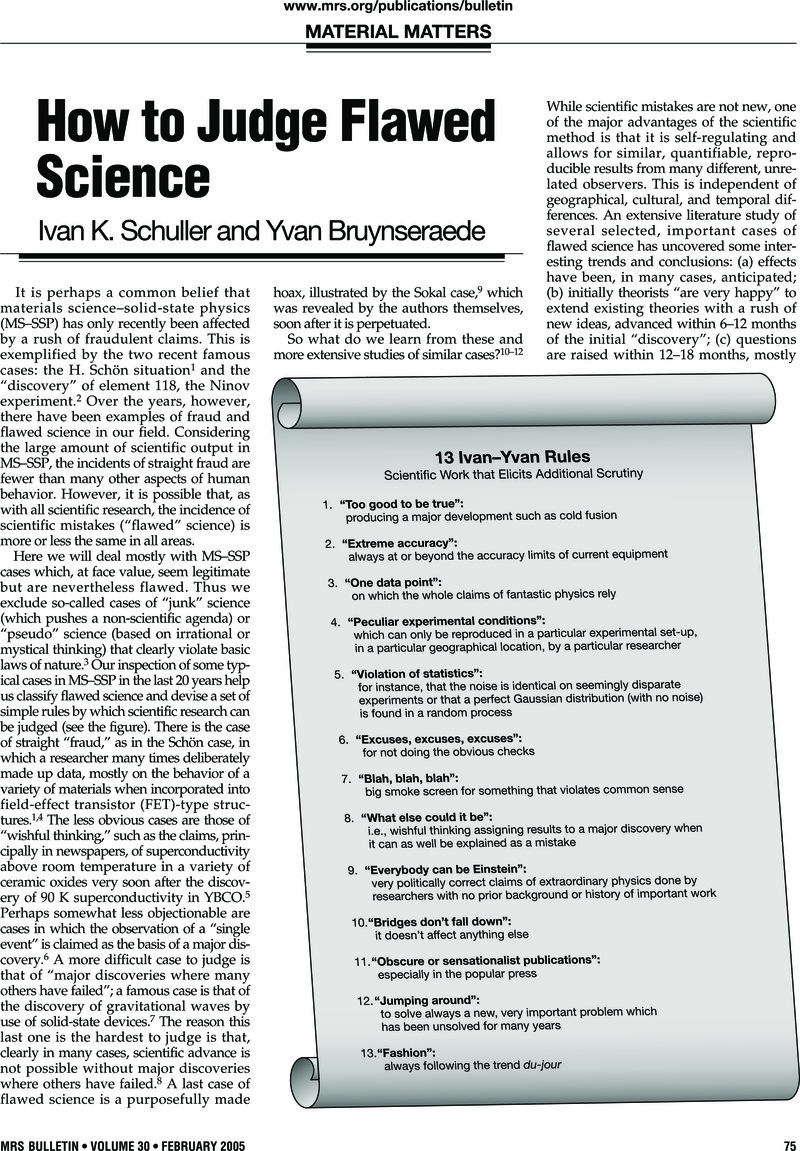4. For a discussion and further links to the
Schön, H. affair, see
Lerner, E., “Fraud Shows Peer-Review Flaws,” www.aip.org/tip/INPHFA/vol-8/iss-6/p12.html (accessed December
2004); I.K. Schuller and G.G. Güntherodt, “Fraud: The System Works,”
Nature 418 (2002) p. 817; and C.A. Murray and S.R. Das, “The Price for Scientific Freedom,”
Nature Mater. 2 (2003) p. 204.
Google Scholar 